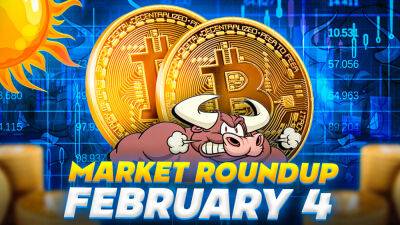Price analysis 1/6: BTC, ETH, BNB, XRP, DOGE, ADA, MATIC, DOT, LTC, UNI
The United States December nonfarm payrolls report showed a growth of 223,000 jobs, above the market's expectation of an increase of 200,000 jobs. While this shows that the economy remains strong, market observers shifted their focus to the slower wage growth of 0.3% for the month, below economists’ expectation of 0.4%.
In addition, the euro zone’s headline inflation dropped from 10.1% in November to 9.2% in December. Both economic data boosted hopes that the central bank’s aggressive rate tightening may slow down. This triggered a rally in the U.S. and European stock markets.
However, the reaction in the cryptocurrency space remains muted, with Bitcoin (BTC) continuing to trade inside a narrow range. The crypto investors may be taking a cautious approach due to rumors about Huobi’s insolvency, which the company’s representative said were untrue.
Several analysts believe that the extended period of low volatility in Bitcoin could be followed by an increase in volatility but John Bollinger, the creator of Bollinger Bands, thinks otherwise. Responding to a tweet by Wolf of All Streets podcast host Scott Melker, Bollinger said that “prolonged squeezes are rarely valuable signs.”
Are Bitcoin and altcoins showing signs of a breakout or will they remain stuck inside the range for some more time? Let’s study the charts of the top-10 cryptocurrencies to find out.
Bitcoin rose above the moving averages on Jan. 4 but the bulls could not clear the hurdle at $17,061. This shows that bears are fiercely defending the overhead resistance.
Although the price tumbled below the moving averages on Jan. 6, the long tail on the candlestick shows buying at lower levels. The bulls may make one more attempt to drive the price above $17,061.
If they
Read more on cointelegraph.com








